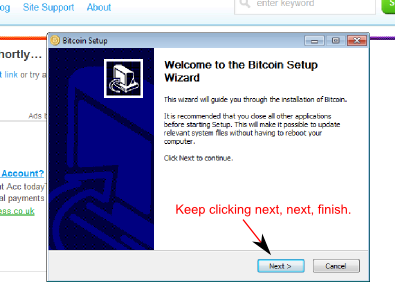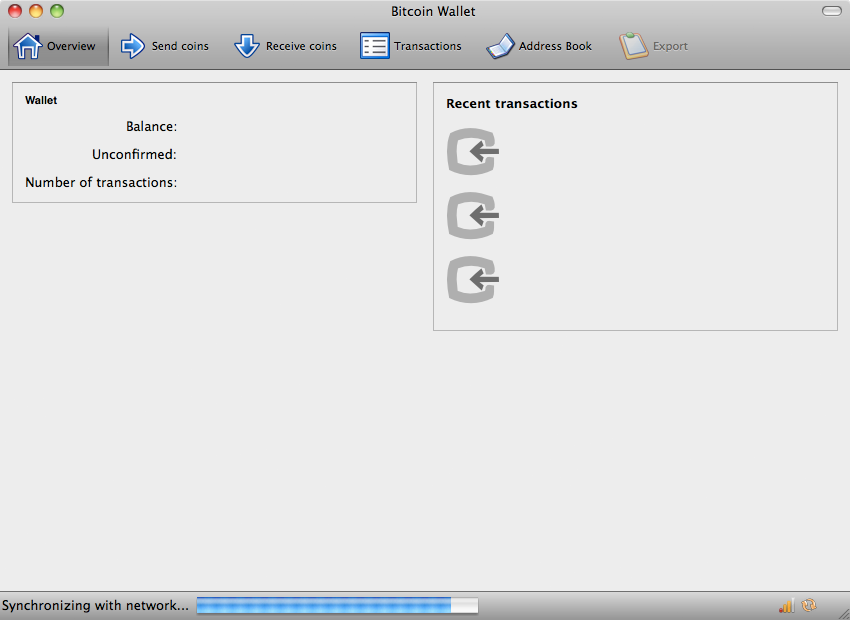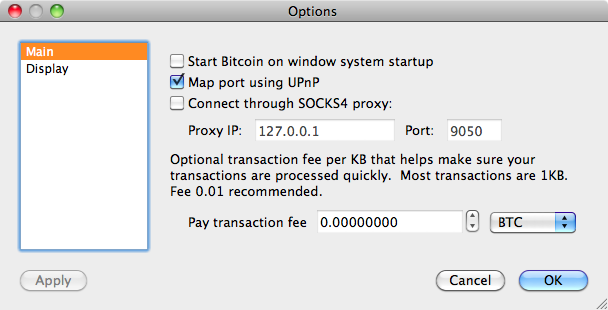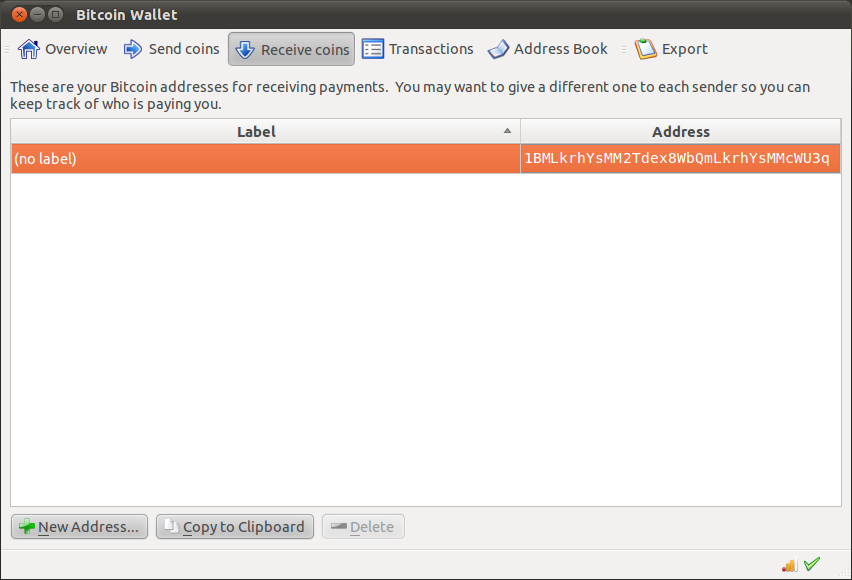Help:Installing Bitcoin Core: Difference between revisions
→Initialization: Show how to find the bitcoin address. |
The faucet transactions may not always be relayed to the client until 1 confirmation, so use the term eventually. |
||
| Line 33: | Line 33: | ||
[[File:Get some btc.png|frame|none|Getting free coins from the Faucet]] | [[File:Get some btc.png|frame|none|Getting free coins from the Faucet]] | ||
The client will eventually show the transaction. After about one hour the transaction should get 6 confirmations. You are able to spend the coins once the transaction shows at least one confirmation. | |||
The confirmation counter (like the block counter) will increase by one roughly every 10 minutes. Six confirmations are considered as 100% sure a transfer has been processed. | The confirmation counter (like the block counter) will increase by one roughly every 10 minutes. Six confirmations are considered as 100% sure a transfer has been processed. | ||
Revision as of 22:17, 12 February 2012
An account can effortlessly be created using an eWallet service. eWallet services provide an online wallet to hold your bitcoins.
This guide covers installing Bitcoin without needing a third party wallet service.
For Windows computers
Download Bitcoin and install it.

For Mac computers
Download Bitcoin and expand the disk image.

Drag the Bitcoin icon to the desired install location, and double-click the icon to run the application.
Initialization
The Bitcoin window will open and connections will start up in minutes. The blocks will begin downloading.


Your wallet will automatically have your first bitcoin address.

Getting my first coins
The Bitcoin Faucet website currently hands out 0.001 BTC to new bitcoin users. Fill in the form with your bitcoin address. See Samples and Marketing Offers for other methods.

The client will eventually show the transaction. After about one hour the transaction should get 6 confirmations. You are able to spend the coins once the transaction shows at least one confirmation.
The confirmation counter (like the block counter) will increase by one roughly every 10 minutes. Six confirmations are considered as 100% sure a transfer has been processed.


- The Trade article shows hundreds of merchants who accept bitcoins.
Buying Bitcoins
Bitcoins can be bought from individuals, on trading exchanges or from other online services. See the main page about Buying Bitcoins for more information.
Points to remember
- You don't need to be online to receive BTC.
- You can create as many new addresses as you like. Using a different address each time helps keep you anonymous.
- You can be anonymous with adequate precautions.
- You cannot send BTC to an invalid address. Typos are not a worry as the payment will refuse to send.
- The wallet file holds the keys that allow spending and thus the computer should be protected from the risk of loss and theft.
- Leaving Bitcoin open improves connectivity for the network and ensures that you don't fall behind on the block chain. Also see the FAQ about port forwarding
Proceed to the introduction
Technical
Block chain
The block chain is a never-ending story of every transaction throughout the network from day 1 (genesis). The first time you run Bitcoin, it is downloaded and verified on your computer. Every new transaction is added to the end of this chain and verified by the network to be valid.
Addresses
Whenever you send a coin, you are actually sending a cryptographically signed message, associating your coin with the recipient's address. This effectively transfers ownership to to the recipient. Once they own the coin, they are free to transfer it to another person.
A wallet is a collection of addresses. You can create as many new addresses as you wish; having more addresses makes you more anonymous, because then people cannot see how much BTC you received. Your wallet contains the secret keys used for spending that money, and must be backed-up regularly. If you lose the wallet then you no longer possess the money.
Generating
New coins are mined through generating hashes. These generators are rewarded with a small fee for the computationally intensive task of incorporating your transactions into the block-chain. This fee halves each time 210000 blocks are added to the block chain, or approximately every 4 years. The fee will keep halving until it effectively reaches zero, at which point 21 million coins will be in circulation.